Common pasque flower
Pulsatílla vulgáris
Other names: Common pasque flower, wolf's paw
Genus: Pulsatílla
Family: Ranunculáceae (buttercups)
Climate zone(s): Warm temperate climate
Original home: Europe
Plant type: Perennial
Growth habit: rosette-like
Height of growth: max. 40 cm
Sowing: May - Aug
Flowering: March:white April:pink red May:purple
Fruit ripening: May - Jun
Properties:
Poisonous, Highly poisonous, Deep rooter.
Bee/Bumblebee Willow
Habitat:Sunny spots, i.e. clearings etc.
Soil:
Dry, Moderately moist, Basic, Lean
General Information
Native to Central and Western Europe, the pasque flower grows in rough grasslands or sparse woodlands and often on sunny slopes. The plant prefers dry to moderately moist, well-drained, calcareous, nutrient-poor, sandy-stony soils in as warm and sunny a location as possible. It is very low in competition and is quickly crowded out by other plants if fertilized too heavily.
Appearance
The herbaceous plant spreads easily forming cushions. Its rootstock can reach up to one meter in depth. During the flowering period, the hairy stems including flower are only about 15 cm high, during the fruiting period they become much taller. The basal, stalked stem leaves grow rosette-like. They are also very hairy and appear together with the flowers. The leaves are doubly pinnate. The leaflets are elongated narrow and filigree.
The flowers appear singly, sometimes nodding, at the end of the stems and are surrounded by whorled bracts. The six petals are shaggy-haired and purple to violet in color. Depending on the variety, the flowers can also be red, pink or white. At the beginning of flowering, the petals are arranged in a bell shape, then as the flower progresses, they open increasingly. Sepals are absent. Towards the evening, the flowers close. Pollination is by insects such as bumblebees and bees. Pollen is also collected by ants.
Propagation
After pollination, nutlets form with feathery tails that allow wind dispersal up to 80 meters. The seeds have a short germination period and should be sown as soon as possible. Vegetatively, the plant can be propagated by dividing the rootstock.
Good to know
All parts of the plant are very poisonous. The plant sap is irritating to the skin and mucous membranes. Skin contact can cause blisters, chemical burns and inflammation. Consumption can cause kidney inflammation, stomach and intestinal problems, and paralysis of the central nervous system.
Why do the beautiful things always have to be poisonous...such a crap!
Well it is what it is...But being toxic has not stopped me from taking photos...So have fun looking...
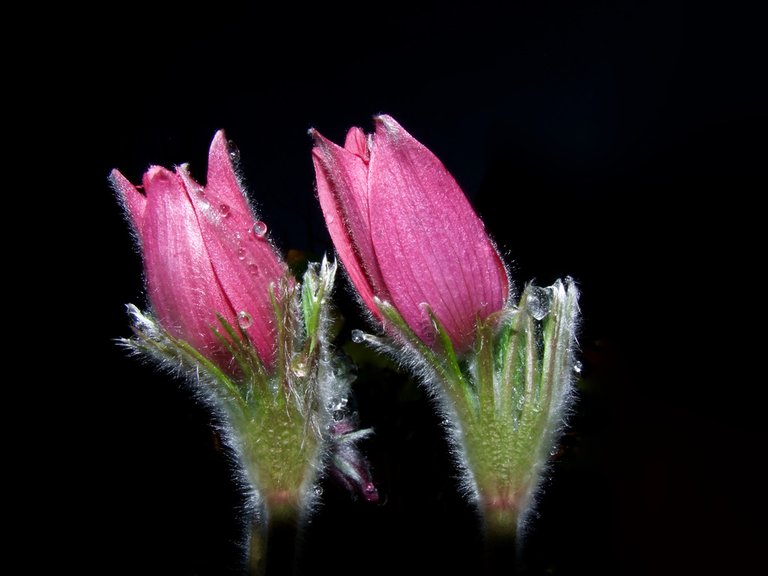
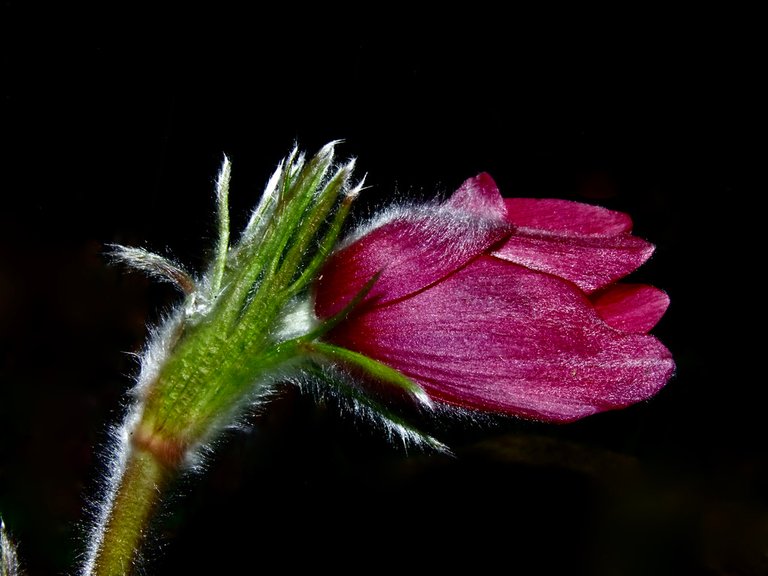
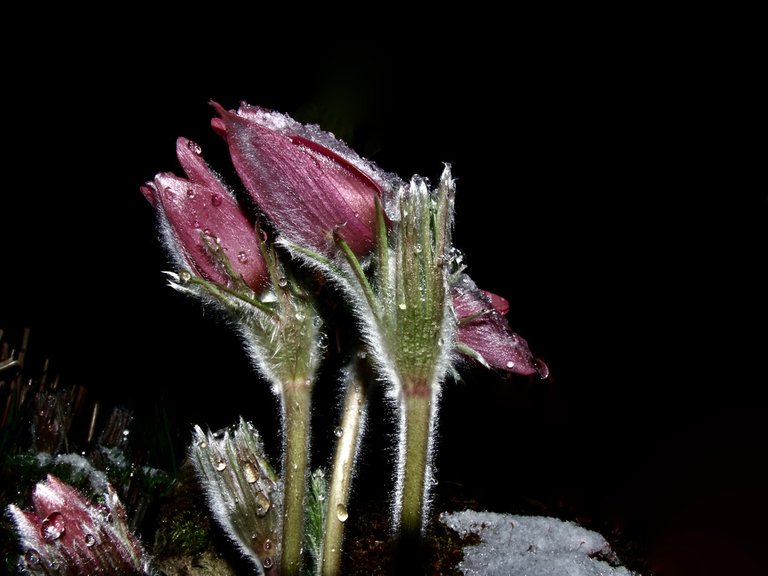
Starting with these three: I took them in march...which explains the pink color...and I was really lucky because on that day I took the it snowed and the drops were frozen...
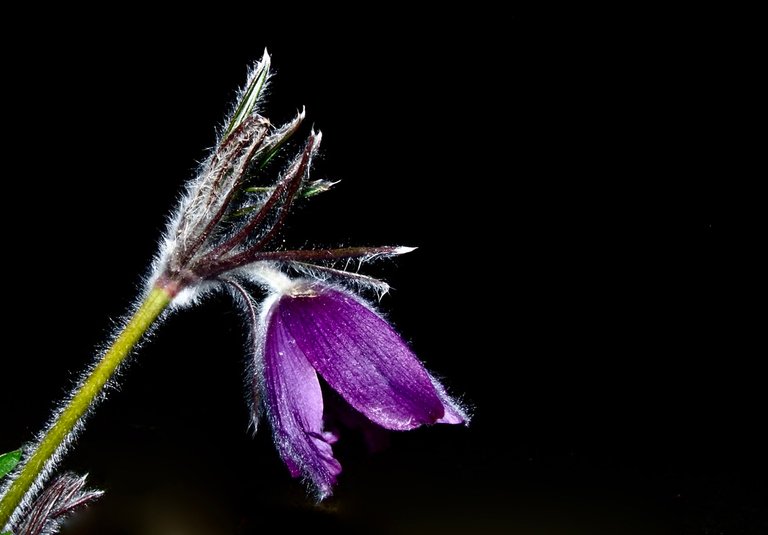
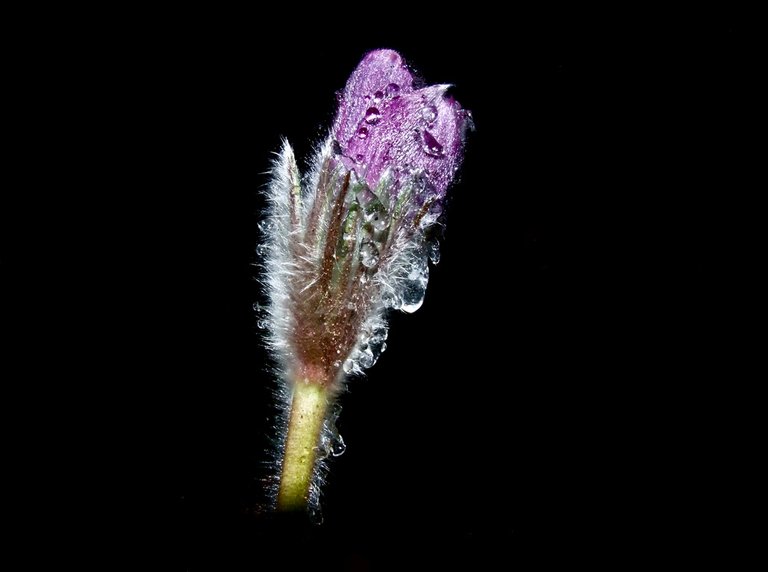
And then I got two purple ones...well they are from april...
And in Germany we have the saying: April, April that does what he wants...And if you relate that to the weather...it fits 100 %...That's why I have another one with frozen drops...
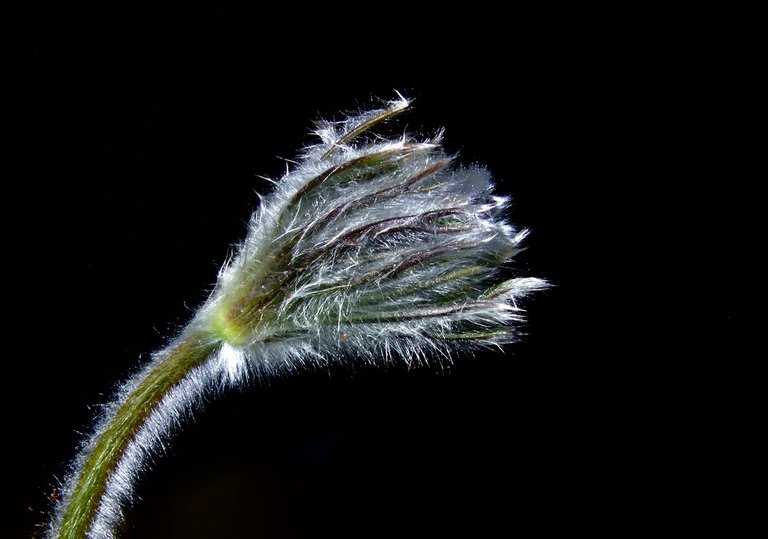
And finally a "baby"...That's from today...you see...still some new ones coming...
Well that's it again...
Now please let me know if you liked the flashlighted look...(with the black background...)
And it would be great if you tell me which is your favorite...
Thanks for reading and I hope to see you soon...
-Hive on
"All pictures and text are my own if I'm not telling you it's different"
@tipu curate
Upvoted 👌 (Mana: 11/22) Liquid rewards.
thank you🙏
Congratulations @ximlouiii! You have completed the following achievement on the Hive blockchain and have been rewarded with new badge(s) :
Your next payout target is 250 HP.
The unit is Hive Power equivalent because your rewards can be split into HP and HBD
You can view your badges on your board and compare yourself to others in the Ranking
If you no longer want to receive notifications, reply to this comment with the word
STOPSupport the HiveBuzz project. Vote for our proposal!